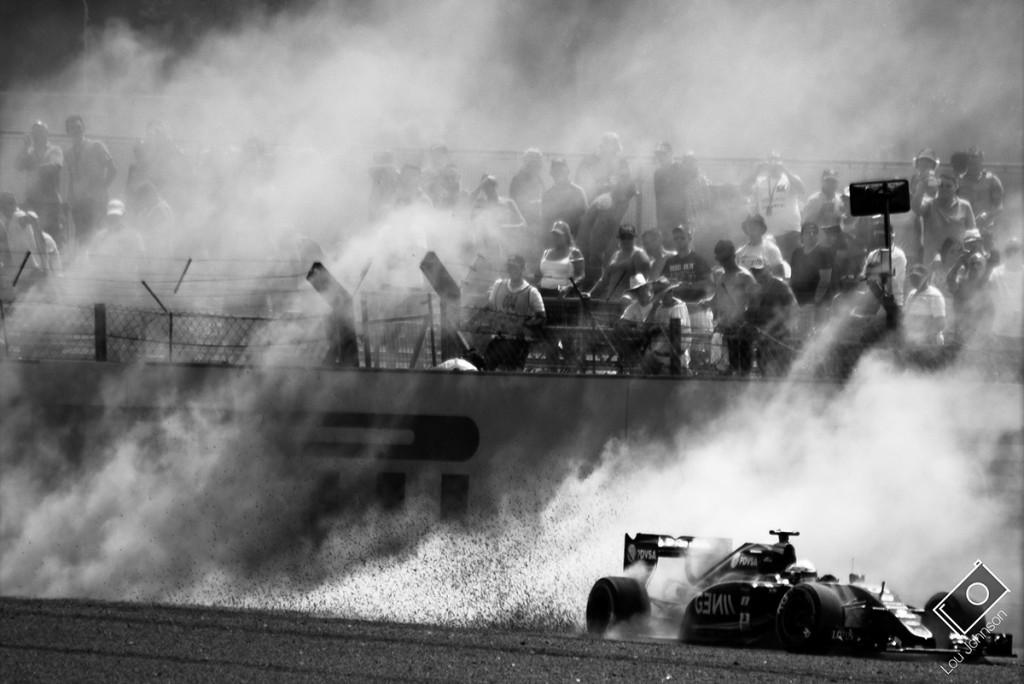
Lou Johnson gives us the lowdown on how to take great photos at F1 races, sharing useful tips and advice on kit, the basics, capturing speed and using your surroundings.
Main image: Romain Grosjean kicks up the gravel at Silverstone, 2015 British Grand Prix. All images © Lou Johnson Photography
It’s long since been a passion of mine to photograph Formula 1. It’s a sport that lends itself to the lens, beautiful locations, bright sponsor logos, exciting racing and attractive cars. What’s not to love?! In this world of social media, it’s now easier than ever to find the latest shots from those talented photographers the other side of the catch fence.
However, it doesn’t mean that just because you don’t have that access you can’t capture great images of your own. Access isn’t always everything. Besides, a lot of photographers with passes will head out to the public areas to shoot too! I’m a photographer, and I’ve recently attended the 2014 Canadian Grand Prix, and the 2015 Australian and British Grand Prix, and while I don’t have the access the official photographers do, that doesn’t stop me being creative and having some fun shooting at the track.
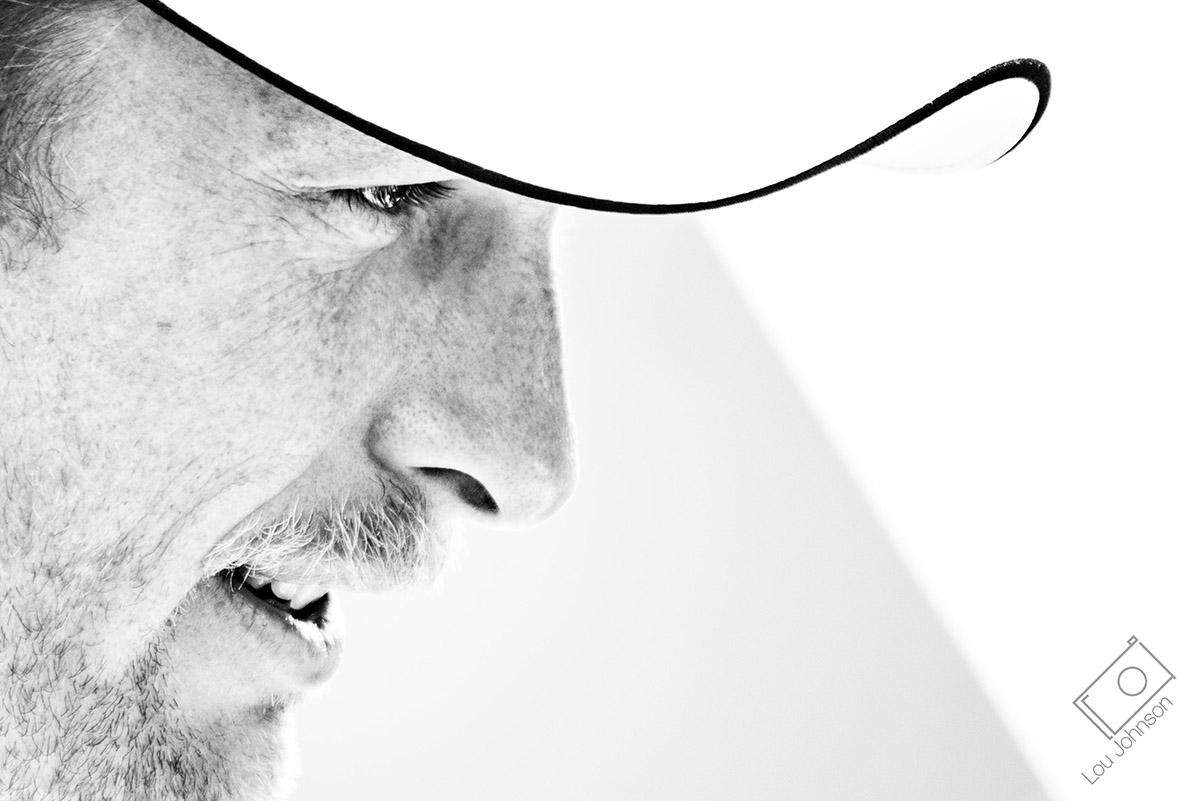
Camera Kit
You don’t need to spend thousands on equipment to be able to get great shots at an F1 race, but you’ll probably need something a little more substantial than your trusty compact or mobile phone. While these are great cameras in their own right, it’ll be hard to have the control you need to shoot through the fencing, or capture the fast cars in action.
Mid range DSLRs such as the Nikon D3300 or Canon 750D are ideal for the beginning of your motorsport photography journey, but better than that, they’ll be great tools to use for shooting holidays and special occasions too – meaning you really can get the most out of your money!
Lenses are the most important part of any photographer’s kit. If you’re just starting out I’d recommend a zoom lens. I used the Sigma 70-300mm f/4–5.6 lens, it is extremely versatile and great value for money. As time goes on, and you’ve had some more practice you may decide to invest in a slightly more expensive piece of kit. I’d also recommend purchasing a wide angle lens of some sort. They’re perfect for capturing the atmosphere, and those lovely big sky shots at Silverstone!
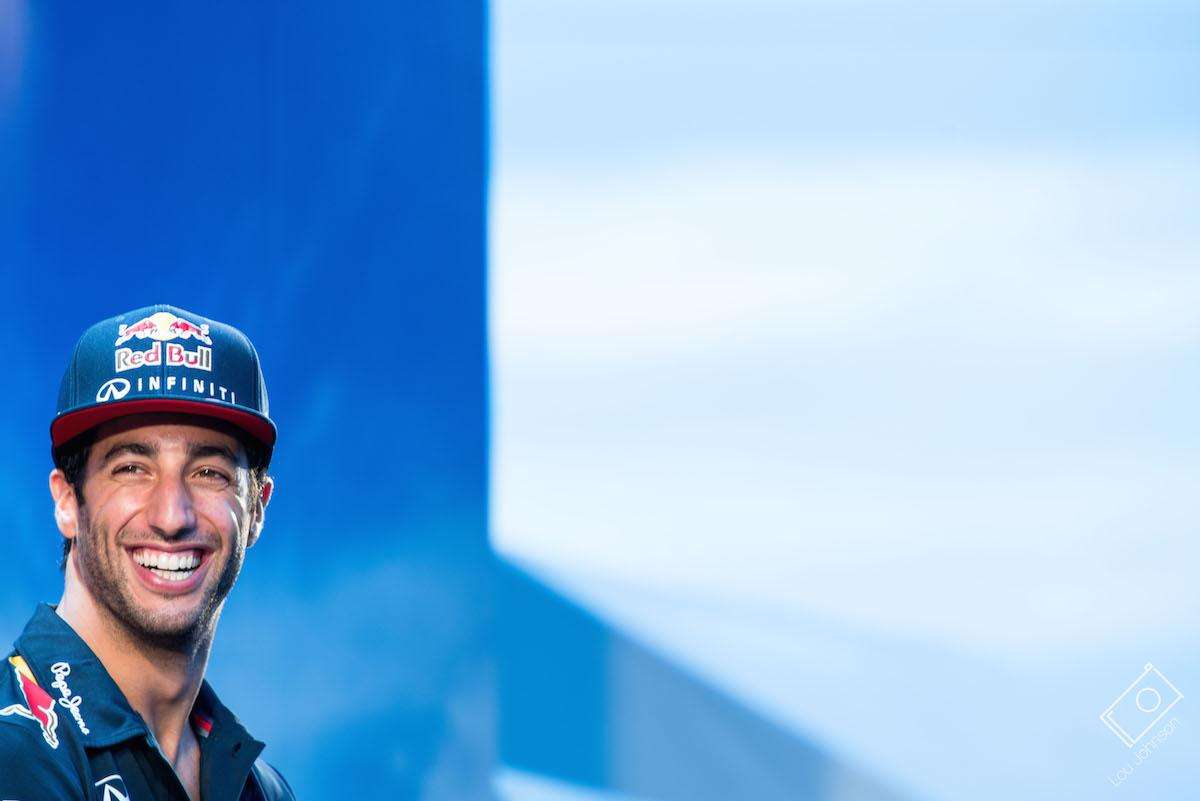
The Basics
The best thing you can ever do for your photography is to get to know your equipment. Know your camera inside and out, find out how it works, find out what each setting does and what that means for your image. Then switch it all to manual. It may seem daunting and take some time to get used to, but it’s truly the best way to get to know your camera and take control of your photographs
Light is the most essential element for your photos, even the word ‘photography’ has its roots in the Greek language and roughly translates to the phrase ‘drawing with light’. Once you understand how your camera works, and how you can control how the light gets to your sensor you’ll have a much greater control over your camera and the photos you create.
The two main elements of your camera that you most need to be aware of are the aperture and the shutter speed. The aperture controls the amount of light that enters the camera, through its size, and shutter speed determines how long that aperture is open for. Both are essential to the outcome of your image.
In basic terms, the smaller the f-stop the wider the aperture, the more light that gets in to your camera. A wide aperture creates a very shallow depth of field in your photo, making it ideal for shots of the drivers in the paddock where you don’t want any distraction from the background. (See shot of Jenson Button below, taken at the 2015 Australian Grand Prix) However this isn’t just reserved for portraits, it can be used to great effect on the cars on track too. (See shot below of a Ferrari at the 2015 British Grand Prix)
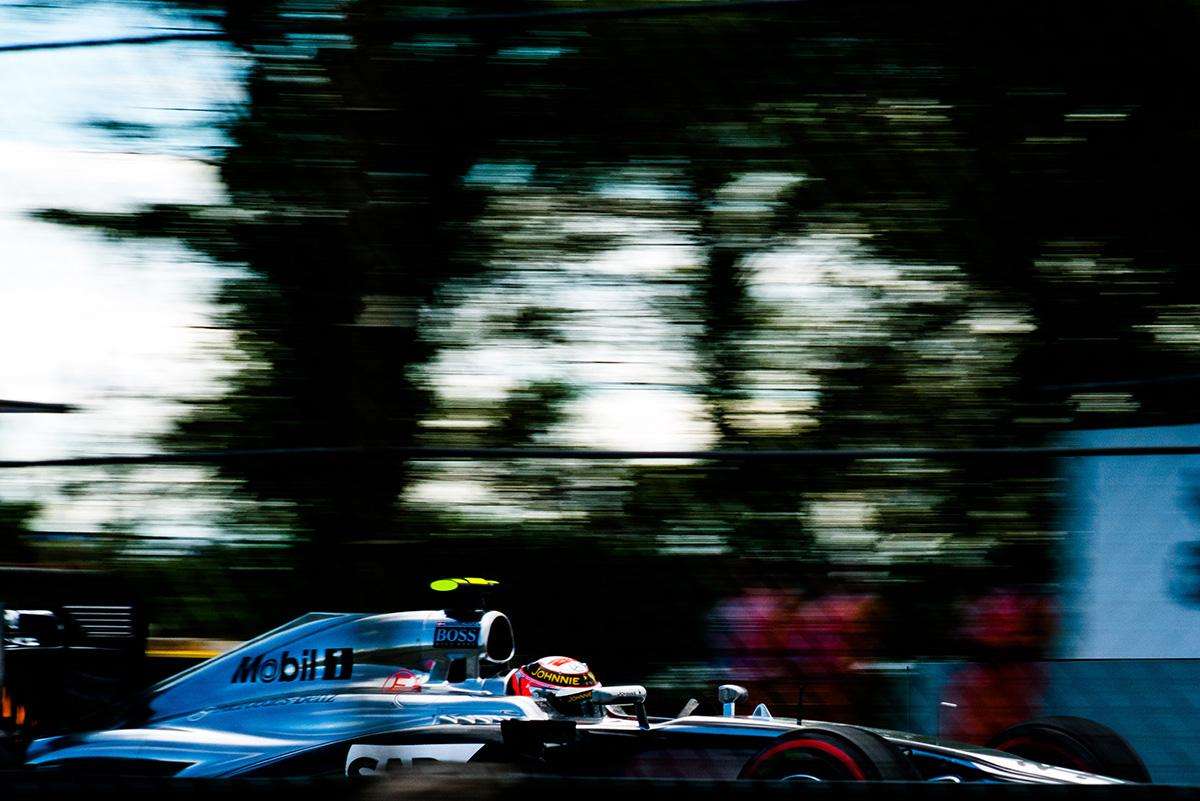
Catch Fencing
One of the biggest problems you will face as a photographer with fan access at a racetrack is the catch fencing. They have the ability to ruin your photos, but they are so essential to our safety. However, just as our eyes can focus through the fences as we follow the race action, so can our cameras. The trick is to find a general admission area that allows you to stand close to the fencing, and ensure you set the widest aperture possible for your lens. Your lens should focus past the fencing, leaving little or no trace of it on the photo. Depending on the track, it may also be possible to find some photographer’s windows (holes cut into the fencing for the professionals to use) or maybe even gaps in the fencing at marshal posts.
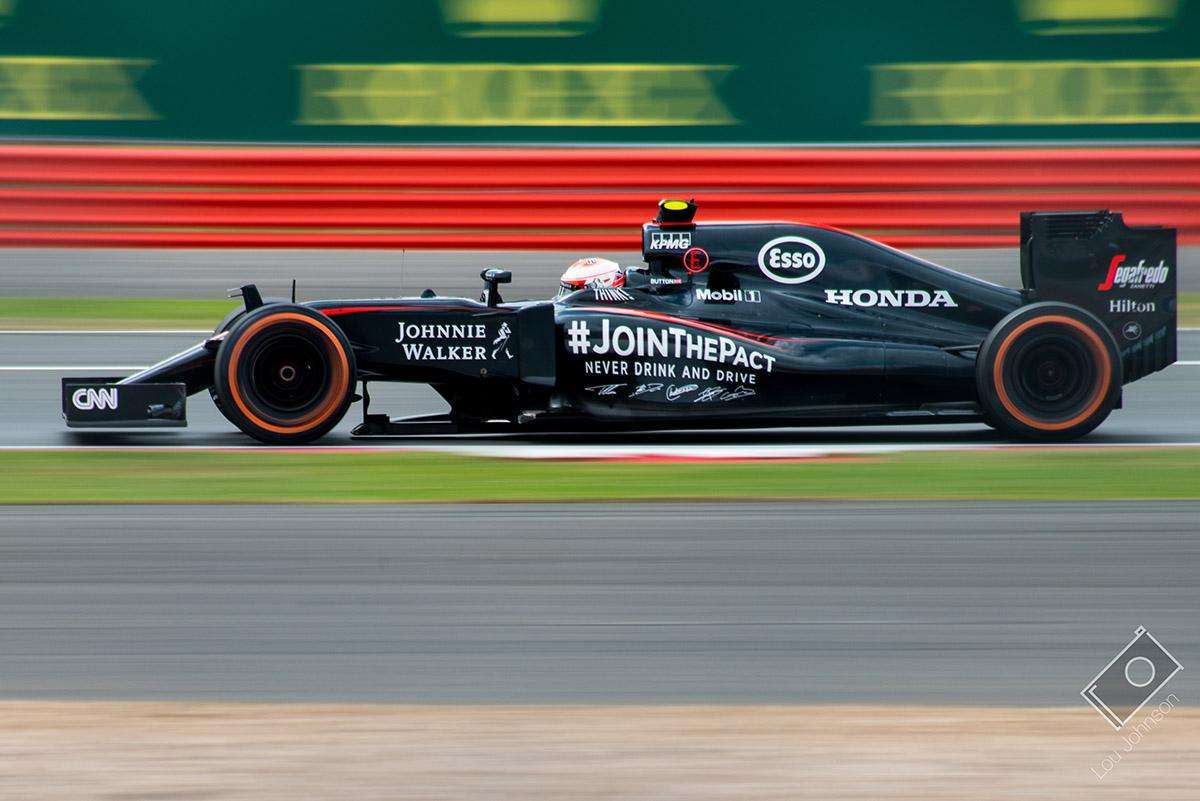
Capturing Speed
Panning is probably the photographic technique most associated with motorsport. This involves using a slow shutter speed, and following the car that passes as you take the photograph. It can be challenging at first, but can be very rewarding with a little practice. Why not try practicing on the many support races that are at the track over an F1 weekend? Start with a slightly quicker speed such as 1/250 and experiment with slower and slower speeds as you improve. The slower the speed the more freedom you get to capture the motion of the cars, and the colours in the background.
Once you’re comfortable panning you can start to get a bit more creative with your shots, utilise anything around you to help you tell your story of the weekend. Shooting through the crowds, grandstands and trees, can really help to make your images look more visually interesting.
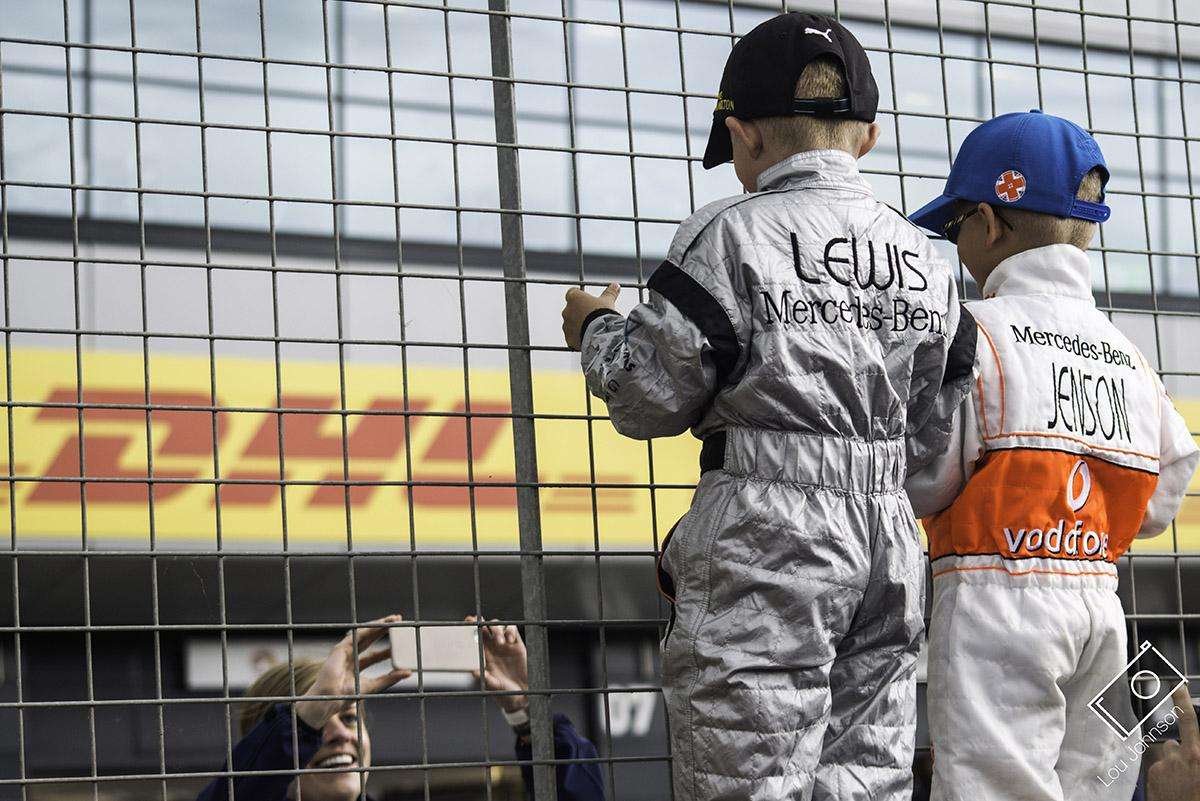
Using your surroundings
There is nothing more exciting when you attend a race than the atmosphere, and I love trying to convey that to my audience. Look around you, Grand Prix’s are full of fans who dress up in the most brilliant outfits, from chequered flags to team kit. Use what you see around you to help tell your story of the race weekend.
Think creatively, if there are twenty photographers stood next to each other at a specific location then try and capture a different shot. Push yourself creatively to tell a different story through your photograph. You don’t want the same image as twenty other photographers if you can help it. Always look for landmarks to include in your image that gives it some context.

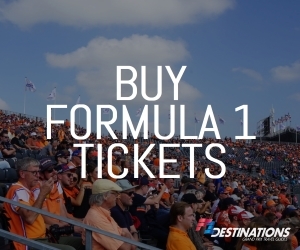

Thanks for taking the time to write some great tips for better photography. Your suggestions are always welcome!
Will be trying these suggestions this weekend at the Sochi Grand Prix! Thanks.
Sounds good Deniz. Maybe you want to share your trip report and photos with us afterwards? It’s always good to get some advice from fans who go to the new races! Enjoy the weekend.
Hi, Did a photo session at Monza two weeks ago. At the first/second training day I brought my big 300mm Canon lens as my Prato ticket allowed me to use ordinary seats so I got above the fences. Took most pics with that lens at the first chikane. Even the 300mm is a bit to “close” at that distance. A full car length was exactly what was fitted in and then again there’s a lot of shots capture a part of the car as you have to 1. get the focus and depth correct 2. shoot exactly when the moving car is within the frame. But as pointed out, the full weekend gave a lot of motives, colours, people and cars. Sad I couldn’t use the 300mm more but Q-day it was raining for 24 hours (guess you know that we had to wait in the rain fpr more than three hours before they could run all Q’s. Glad I hadn’t that expensive lens to take care of in those conditions.
For the Q and the race I just used an ordinary portrait tele (135mm) and a wide angle lens as I was very close to the fence at parabolica.
Anyway, a lot of pics was really ok but I would appriciate any knowledge of what I’m allowed to do with them? There was some restrictions on the ticket around “just for personal use”. I know it’s at fact that any pic is mine as photographer but I am a freelansing photographer as well. And those days, when 1000 of iPhone pics are taken per minute, I guess a big portion of those pics are out on the internet in a glance.
What am I allowed to do? Naturally not using the pics in adds or so, but if I see a pic as “art” and composition? Is there any way to “sell” a pic from a race? Or if I publish them on the net – am I obliged to set some water mark on them? A good pic can be copied and used without my knowledge.
On short, would be insterested to hear around the restrictions. A law suit from the Formula 1 organisation is NOT what you ask for I guess ;).
Hi Micke, would love to see some of your photos from Monza. I think you are pretty much free to do what you want with them; I don’t think F1 is chasing after every amateur photographer posting their photos on the web. I think you are not allowed to sell them, but probably plenty of people do.
Hi! Any recommendation on whether I should bring a tripod or monopod?
Depends on the track, as some will not allow tripods. Better to be safe and just take along a monopod.
Hi Lou, great article, I’m not a photographer , but am planning on learning as this year for my 40th I’m heading to Spa and Monza back to back – want to get some great shots if I can. Is the canon 750d still something you would recommend, or would you advise something newer now?
Thanks, Paul